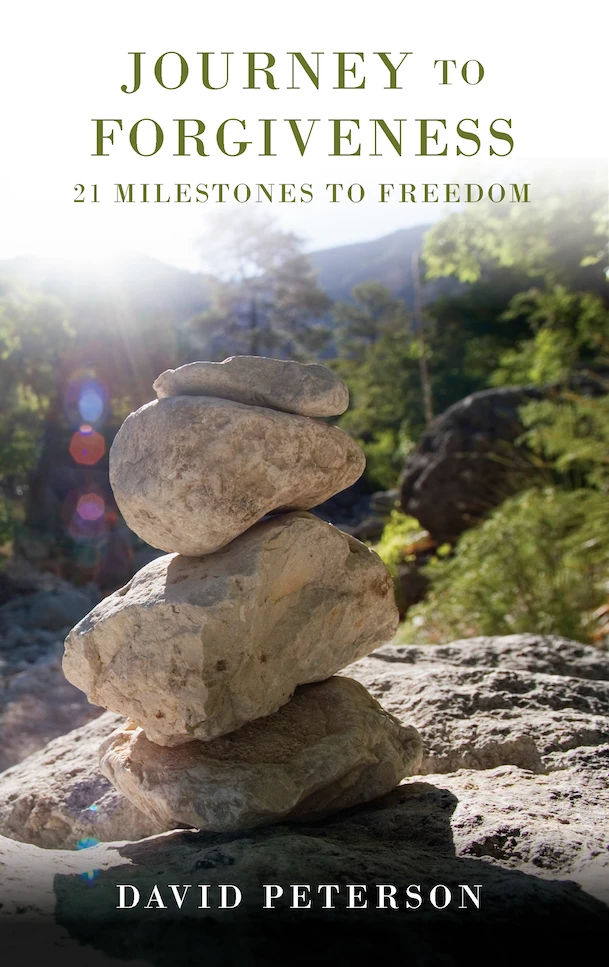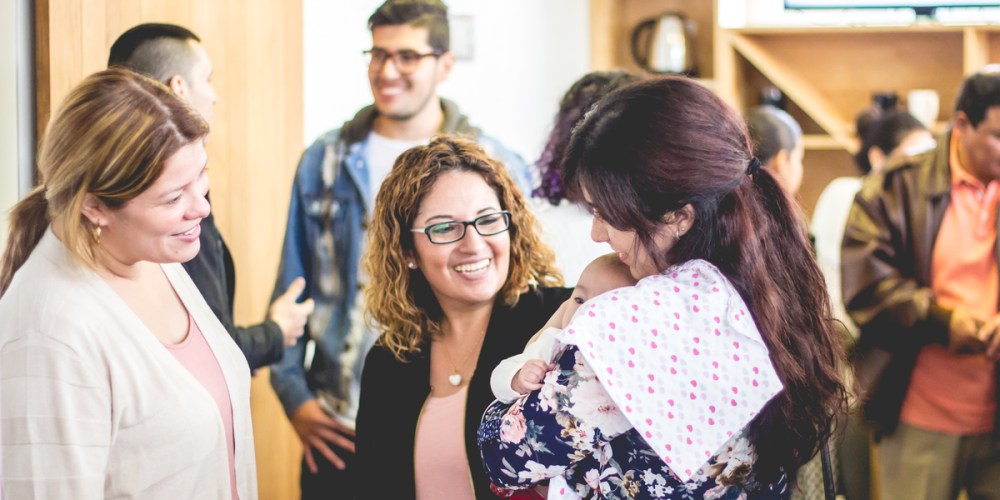A Different Approach to Pro-life Ministry

As a pastor, I sometimes have the opportunity to take on unexpected ministries outside of the church. Such was the case when I was invited to become the Executive Director of Operation Saving Life (OSL), a Christian pro-life organization focused on ending abortion by providing the Spiritual, physical, and financial needs of women who have had an unplanned pregnancy. After many years, and hundreds of lives being saved, our ministry is drawing to a close at the end of this month as we merge with one of our national partners. As I reflect on my brief time with this organization, I’m struck at just how little I understood of this ministry from my days in the pulpit. Below are a few of the lessons that I have learned in ministering to abortion-minded women in crisis.
Start With Compassion
Churches often address the problem of abortion – and abortion minded women – in the wrong way. We view the issue of abortion as a moral crisis – which it is. After all, life begins at conception and to end that life is a terrible sin. Without realizing it, we frame the woman’s decision to have an abortion through this same lens. We assume, as is often advertised as the “benefits” of an abortion, that the woman is making a choice for family planning reasons, because economic hardships, or perhaps so that she can reach a milestone in her career or education. As the church, our response is often to try and help this woman see the moral wrong of this decision. That she might choose life, because this is the right decision, even though it is the harder one to make.
In reality, 75% of all women who have had an abortion report that they were forced into the procedure. Nearly every woman in our program at Operation Saving Life was a victim of domestic violence, risked losing their jobs or homes by having another child, faced extreme poverty, or had family or partners who were demanding that they have the procedure. It is a reality that those in the abortion industry don’t often share, because you can’t be pro-choice if you don’t have the freedom to choose in the first place.
The issue of abortion for many of these mothers, then, doesn’t focus on morals, but rather survival. This is how the church must respond to the issue as well. While we should never shy away from calling abortion a sin, beginning our approach to saving a life with a moral argument will only condemn and lead a mother further from Christ. More often than not, she knows that abortion is wrong – in fact, she doesn’t want one – but does not see any other option out of her situation than to end the pregnancy. She is trying to survive and avoid hardship that she does not believe that she can bear. The response of the church must begin with compassion by responding to the barriers that she feels she has in bringing a child into this world. By showing her that there is a path to having this child and to thrive, we are giving her hope. In a very real way, our goal is to embody the words of Isaiah 40:3 “In the wilderness prepare the way for the LORD; make straight in the desert a highway for our God.” We cannot begin our ministry to the abortion-minded mother in condemnation, but instead in hope, in understanding, and in a very clear response to the challenges that she faces. We make a path, when no path can be seen.
Lead With Generosity
In our experience, the barriers that many of our mothers faced focused on just a few areas. At OSL, we found that if we could tailor our ministry to meet these needs, then the mother would most likely choose life. In fact, in our seven years, we have not had a single woman choose to abort her child after entering our program. Every one of them chose life. We didn’t do anything radical. We simply listened and responded. Most importantly, we followed through.
While every situation is different, we found that the greatest and most common barriers that a mother had in choosing life included: Housing, Transportation, Childcare, and Community. If we could help a mother have safe and stable housing, provide the means to get to work or doctor’s appointments, find adequate childcare, and surround her with people who would love and support her, we would also be providing hope and a clear path to choose life. Although paying rent or buying a car can be very big asks, especially for smaller churches, there are still ways that any congregation can help accomplish these goals.
One of the most successful ministries that we had was our mentor mom program. It cost nothing, required no space, and was easy for us to scale with our needs. Many of the mothers in our program were facing parenthood alone. Their families or the father were not supportive, and these mothers often were first-time and single parents. What they needed most were people who could surround them and let them know that they didn’t have to face this alone. In partnership with local churches, we paired the women in our program with experienced mothers in congregations. These mentor moms would check in on our moms regularly, befriend them, pray with them, help them when a mom was overwhelmed, worried, or just needed someone there. Ministry happens when we experience life alongside others, and this was ministry in its purest form – simply loving one’s neighbor in the name of Christ. No money was ever exchanged, simply fellowship and support.
Some churches could help in much greater ways. They donated cars or raised funds for auto repairs. Others held gift card drives for Uber funds or Walmart cards so that a mom could get diapers or make it to doctors’ appointments. Some hosted weekly support groups and Bible studies for single moms. Women’s groups across the city hosted baby showers, threw birthday parties, or provided Christmas presents. A few churches paid for childcare, offered work or job placement help, paid for temporary housing, one even offered an unused parsonage as safe housing for pregnant moms. Generosity can come in many forms. The key is to always look for and respond to the barriers that these women are facing. Hope is easy to find when a path is made clear. As a ministry, our job is to bring light into the darkest of places. Even the dimmest light completely changes our perspective of the situation we are in. If a church can accomplish this, then they can help save a life.
Continue The Relationship
Perhaps the most disheartening thing we find is that many ministry efforts are far too short. All of our churches will offer occasional help and prayer, but what these mothers need is a long term investment. Sadly, most pro-life ministries stop once a woman has chosen to keep her child. Many pregnancy care centers, too, can only offer support for up to a year, and this support is limited. Yet, consider all that these women have been through. In just a few months, they have become parents! They are over tired, over worked, many have been abandoned by their boyfriends or husbands, some have lost their jobs, others are struggling to keep up with the costs of childcare, a few are rebuilding their lives after situations of abuse, while others are simply trying to pick up the pieces. It is not uncommon for us to find that God has used a child to save the life of a mother, but the mother still desperately needs support.
This is the greatest ministry opportunity that the church has. Offer ongoing support. In this ministry, we have to go big and go long. At OSL, a mother could remain part of our program for up to three years after a child was born. Our commitment to help wasn’t limited to one-time support, because our goal was to develop a long-term relationship with the mother. Like the church, we are in the business of saving lives and changing lives. This takes time. So, rather than doing something once, we would do it for an entire quarter. Need help with an electric bill this month? We will pay it for the entire summer. Need help with rent, with food, with daycare… we’ve got this, but not just once. That’s 90 days on us, so that you can be free to focus on what you need to be well.
The twist is that we did not do this simply out of generosity, but for the purpose of longevity. We reevaluated our commitments every 90 days, but during that time, we regularly met with the moms. We prayed with them, offered pastoral care, helped them to set goals, and worked with them to achieve them. So long as they were working to get on their feet and parent well, we would be with them the entire way. They should never have to face this challenge alone. It was this kind of commitment that saved lives.
There is no reason for a church not to do the same thing. Most congregations could very easily adopt a mother or two in need. Make the commitment to invest in that family and do so for the long term. Be open that you are doing this because this is the kind of thing that Christ calls us to do. There is no condemnation, but a clear truth of love, hope, and a future. While boundaries, goals, and expectations should be set, developing relationships with these families can make a generational impact in their lives. It is the best tool that we have to break the destructive cycles that so many in our community face.
Final Thoughts
Although the work of Operation Saving Life is ending, it is my prayer that our ministry will continue through the church. There is nothing more powerful in these women’s lives than what Christ can accomplish in them. Often, as is true in the church itself, it was the unexpected child that changed everything for the better. Our job is to prepare the way.























































